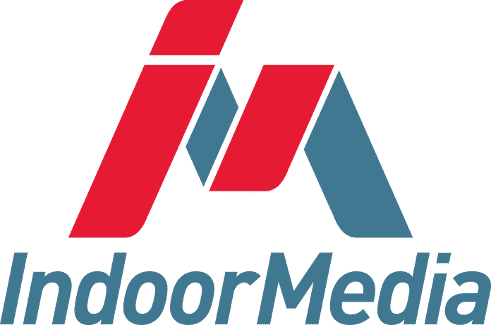William has been thinking about establishing his company’s presence online, and thinks that creating a website would be the best way to accomplish that. He’s been daydreaming about a simple site with just a few pages that simply acts as a quick way to grab leads. Even though his idea is simple, getting started seems incredibly complicated. Is there any way for him to design a great website with no skills, limited time, and a tight budget?
Your website is as important to the success of your business as the employees you hire and the product or service you offer. You need one. Period. This quick guide will help you get your site up and running so you can reap the benefits of this crucial online strategy.
What are my options for building a website?
Website Builder
Website builders are the training wheels for self-designed websites. Since many of these programs are designed for beginners, they start off with templates and resources that allow you to handle web design on your own. However, a do-it-yourself website builder won’t always have all the answers. You may need to spend time learning HTML and CSS in order to get the website you really want.
The main benefits of a website builder for small business owners are that they let you host, create, and maintain your website all in one place. This can offer the simplicity that you need to get a website up and running in a short period of time. Plus, these programs often start with a free plan with the option to upgrade to more expensive packages as your business grows.
Check out this comprehensive list of website builders.
Freelance Web Designers
Hiring a freelance designer gives business owners a greater degree of control over their design while spending less time on the process. However, there are a few things to be aware of before choosing this option.
When searching for a freelance artist through sites like 99 Designs or Upwork, make sure you know what you’re getting before agreeing to work with a designer. Ask for references and a portfolio, and do your research on cost! You’ll waste yours and the designers time by agreeing to work with someone who doesn’t share the same vision or standards that you do. Also, keep in mind that a freelance designer is just that, a designer. You will still need to find a host for your site and have the design implemented before you can go live.
On the plus side, hiring a freelancer will give you more control over the actual design of your site. You can work with them to create something truly unique for your business that’s geared toward bringing customers through the door. Hiring a freelancer will also save you the time it takes to create a website from scratch. Yes, website builders make the process simple, but getting your site just right takes time. If you don’t have an extra 2-3 hours a day to spare, freelancers are a viable option.
Professional Designer
Web design agencies and professional designers are an option, but not one we typically recommend for small businesses. You’ll get a custom design that will certainly stand out against your competitor’s, but at what cost?! No, seriously. It’s expensive! Even a basic, small business website can cost between $2000 – $5000.
If you have the cash to spend but not the time or design skills, then this option may be the right one for you.
Design Best Practices
No matter which option you choose, here are some basic design best practices to get your site in tip-top shape!
- Find Examples: Search other people’s websites and use them as a starting point before attempting to create one yourself. Having a real-life representation of what you want your website to look like can help keep you, or your designer, on track. Your examples don’t have to apply to the whole site. Taking specific examples from multiple places can be just as effective.
- Mobile First: More people access the internet on their smartphones than they do on a computer. If your website becomes a mess on a small screen, users will ignore it. Design for mobile devices first—and use Google’s Mobile-Friendly Test to see how well your website performs on mobile devices.
- Consistent Colors: Design must be consistent on your site, otherwise, visitors may become confused and click away. Pick two or three colors and stick with them throughout the site.
- Above the Fold: When visitors reach your homepage, you want them to see what your products/services are and what you can do for them (i.e., the value proposition) right away. Although computer displays don’t necessarily have a middle, take a cue from newspapers and position your most important information “above the fold”—the first screen users see before they scroll down.
- Use design as emphasis: Your website needs to look good, but it also needs to provide value for your customers. To avoid overdoing it on the design, map out the content you want to include first, then use to design to emphasize your messaging.
What content do I need to put on my website?
There are two audiences you need to write content for: search engines and your customers. In order for your business to show up on the first page of search results, you have to write content the search engines will like. And in order to make sales, you have to write content that appeals to your prospective customers. Unless you have a full-scale marketing team, it’s difficult to do both exceptionally well at the same time. So which do you focus on first?
Content for Customers
Always, always, always put your customers first. In every aspect of your business, making your customer’s needs the priority ensures that your business is centered around the people who drive your sales! Take care of them, and they’ll take care of you.
When it comes to writing website content, put yourself in your customer’s shoes and imagine what they might want to see when searching for your business. For example,
Restaurant owners may want to offer:
- Menu and pricing
- Professional photos of your food
- Directions to each location
- Nutritional Facts
- Information about where your food is grown or sourced
- Online reservations link
- Ordering and/or delivery capabilities
While realtors may want to offer:
- Personal bios
- Available listings
- Neighborhoods serviced
- Tips and advice on buying, selling, or listing a home
- Testimonials from happy customers
Content for Search Engines
Once you’ve decided what information to put on your website to serve your customers, then you can update your content so that it serves search engines.
To start, make sure you include your:
- Business Name
- Address
- Phone Number
Also known as your NAP, these three pieces of information can reap major SEO benefits when used consistently and kept up-to-date.
After you’ve verified that search engines can find your website and local listings, you need to optimize your written content for search. I’m sure you’ve heard that using keywords is sure to get you to the top of the results page. While keywords still play an important role in SEO, best practices are constantly changing and keywords are not as important as they used to be. The reality is that SEO best practices will continue to change at a rapid pace, and spending the time to stay in the know about each update just isn’t feasible for small business owners.
Our recommendation is to use SEO tools to help you with your optimization. When creating your website, look for tools within your website builder. For example, Wix has a free SEO tool built in that guides you through search engine optimization for each page. After your site is built, other tools, like HubSpot’s free website grader, will evaluate your site, give you a rating on its performance, and then provide next steps for improvement.
Where else can I publish my content?
Social Media. Facebook, Pinterest, Instagram, etc. serve as a direct line to your audience. What you post here can *almost* be guaranteed to reach your most loyal followers. However, social media pages don’t deliver the SEO benefits that other online media do, which means consumers who are searching for businesses like yours may not find you if all you have is a social media presence.
Local Listings. This includes your Google Maps listing and local online directories like the Yellow Pages. Because listings focus on your NAP they tend to rank well in search engine results. While some listings like Google Maps have room for images, virtual tours, and reviews, most listings offer space for a very limited amount of information, so it is difficult to rely solely on this medium to get your full value proposition out to consumers.
Blog. A blog is a great tool for talking about and marketing your business, as well as attracting customers via the SEO that accompanies it. But, blogs are educational, not transactional. This works great for industries like realty, law, and healthcare because consumers often need to be educated about industry trends and best practices. However, for small businesses like restaurants and dry cleaners looking for a true online selling tool, blogs simply fall short.
At the end of the day, all businesses can rely on a website to publish their content online. As a static, formal home for your business, they provide a single place for current and prospective customers to find accurate information about your business. Unlike social media, there’s no login required, so anyone with an internet connection has access to your site. And, as your 24-hour salesperson, websites work to sell your products or services at all times of the day.
Actionable Steps
- Select and register a domain name: We wrote a whole blog post on domain names and why they are important. Although coming up with a name requires some brainpower, the registration process is easy, especially with services such as Google Domains and GoDaddy.
- Select a host: A domain name doesn’t mean you have bought yourself a place on the internet just yet. Your website must be hosted somewhere, and plenty of services will do so at a cost that is relatively inexpensive. Note: If you elected a website builder, your site will likely be hosted through the same platform.
- Write your content: Focus on writing content for your customers first, and search engines second. Mapping out the content you will publish on your site provides a framework for your design. For example, a restaurant who wants to communicate the quality of their ingredients might include a page on how they source their ingredients from local farms.
- Decide on a design: Website builder, freelancer, or professional? Based on your skill-level, amount of free time, and budget, pick the option that works best for you. Then follow design best practices to create a site that looks great and communicates your unique value.
- Test: Make sure that all your links work, your website can be viewed on mobile, and images load in a timely manner. Use tools like HubSpot’s website grader to make sure everything is in tip-top shape.
- Go live! Your website is ready for the world and—more importantly—customers.




 By IndoorMedia Marketing
By IndoorMedia Marketing By Talitha Turkin
By Talitha Turkin